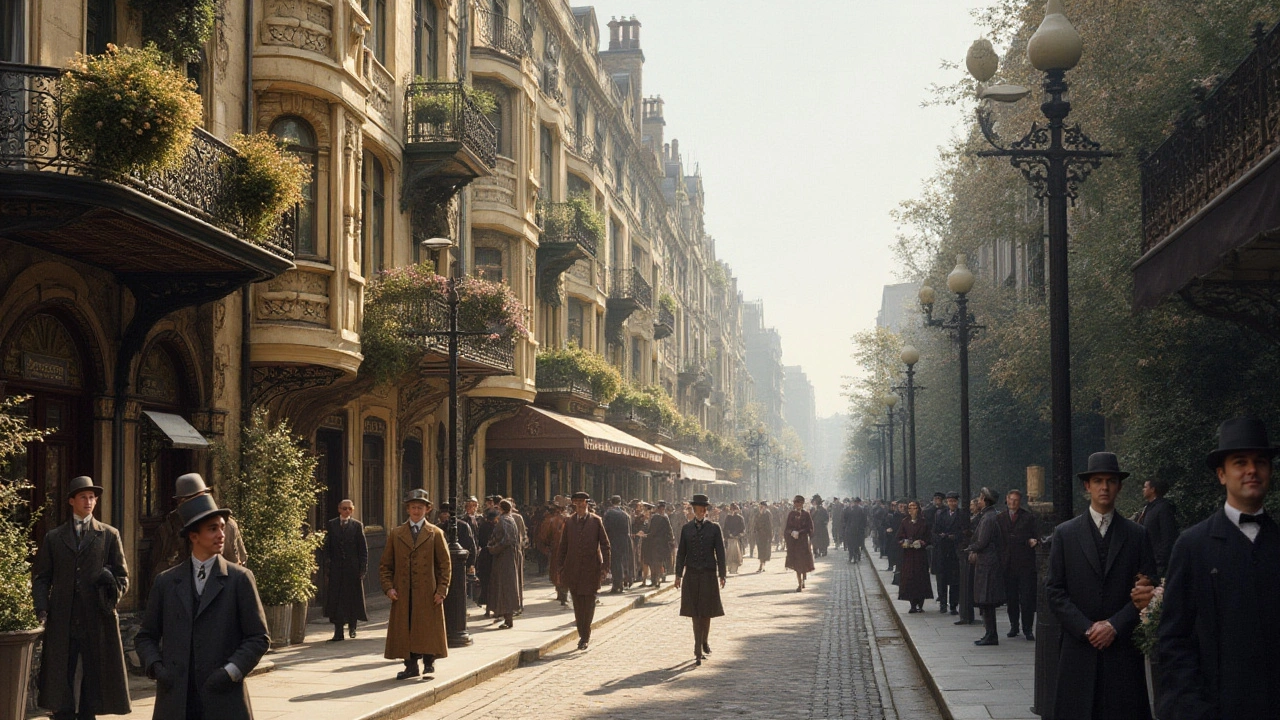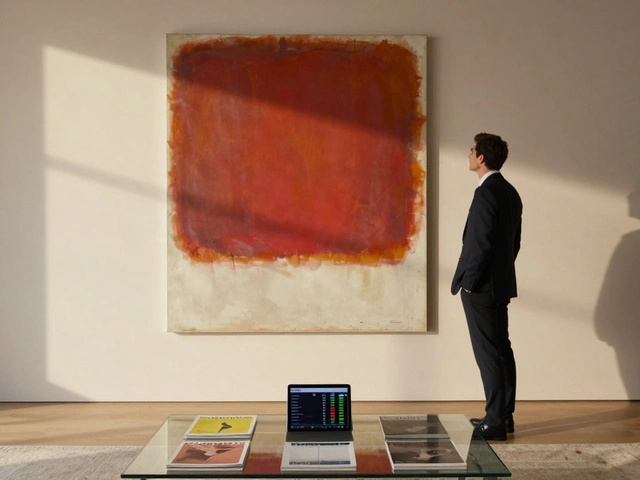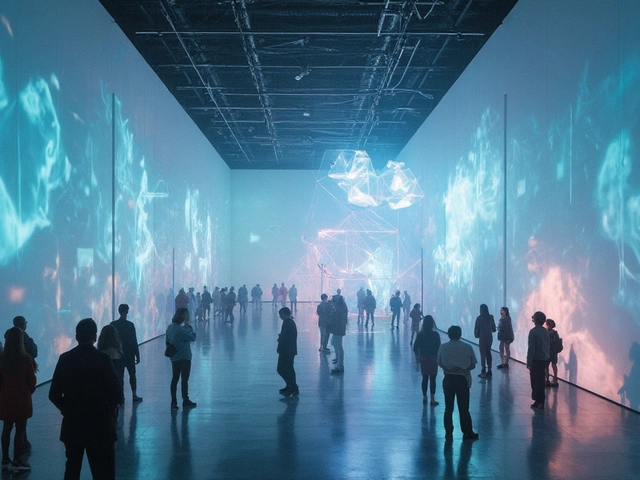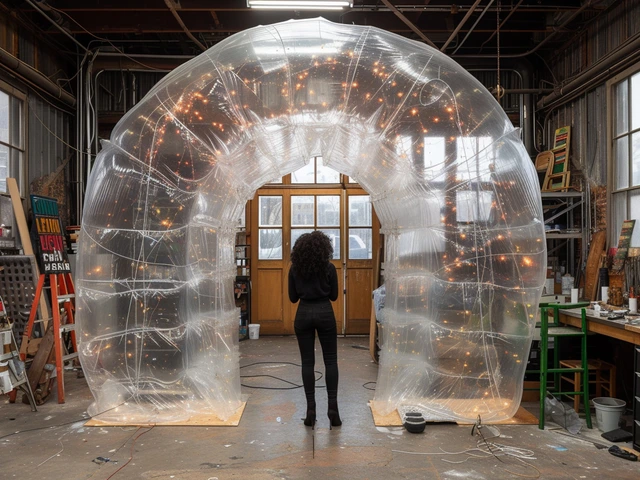Art Nouveau, a captivating art movement, emerged during the late 19th century as a response to the industrial revolution's rigid lines and monotonous designs. Aiming to bring art back into everyday life, it embraced the beauty of the natural world through fluid lines and intricate patterns. The movement found expression in various forms, from architecture and interior design to jewelry and graphic arts, captivating diverse audiences across the globe.
This style became synonymous with elegance, inviting viewers to explore a realm where art and nature intertwine seamlessly. In the heart of bustling cities, Art Nouveau facades with undulating forms contrasted sharply with the harshness of industrial structures, offering a refreshing aesthetic escape.
Whether you're new to Art Nouveau or a seasoned enthusiast, this visual journey promises to deepen your understanding of an artistic revolution that continues to fascinate and inspire, inviting you to see the world through a lens of beauty and harmony.
- The Origins and Evolution of Art Nouveau
- Key Features and Design Elements
- Influential Artists and Their Masterpieces
- The Impact on Architecture and Interior Design
- Art Nouveau's Enduring Legacy
The Origins and Evolution of Art Nouveau
The tale of Art Nouveau begins in the latter years of the 19th century, a period marked by dramatic transformations in the societal fabric and artistic endeavors across Europe and beyond. This movement arose as not only a rebellion against the constraints of academic art but also a celebration of nature and craftsmanship. The roots can be traced back to several cultural and artistic precursors, including the Arts and Crafts movement in England, which sought to revive traditional methods and craftsmanship in reaction to the industrial revolution's mechanization. This emphasis on handmade beauty and functionality found fertile ground in the flourishing imagination of artists who longed to imbue their creations with life and gesture.
Art Nouveau, characterized by its sinuous lines and organic imagery, witnessed its first flourish in cities like Paris and Brussels, eventually spanning into other metropolises such as Barcelona, Munich, and Vienna. The style, sometimes referred to as Jugendstil in German-speaking regions or Stile Liberty in Italy, mirrored the unique local culture whilst holding steadfast to its core values of elegance and innovation. It absorbed influences from Celtic art, Japanese prints, and Rococo ornamentation, creating a blend of east and west that elicited intrigue and admiration. Despite diverse interpretations, each iteration maintained the essence of integrating art into daily life.
Embracing architectural marvels, interior design, ceramics, glasswork, illustrations, and even textiles, Art Nouveau soon became a ubiquitous presence. Architect Victor Horta in Belgium and Hector Guimard in France played pivotal roles in adapting Art Nouveau principles to modern architecture, with Horta’s Tassel House in Brussels heralded as one of the first Art Nouveau buildings. It wasn't merely the form that was revolutionary; the philosophy propounded a holistic integration where every line, motif, and color served a purpose much beyond mere aesthetics, evoking an era’s spiritual essence through tangible artistry.
The Influence and Spread across Countries
As Art Nouveau spread across Europe, each country contributed its unique flavor to the movement, making it a fascinating mosaic of creative expressions. In France, the movement found a stronghold, particularly in Paris, where designers like René Lalique redefined jewelry making by incorporating glass and enamel into exquisite pieces. Spain, led by the inimitable Antoni Gaudí, saw the adaptation of Art Nouveau in architecture through spectacular edifices like Casa Batlló and the Sagrada Familia, which married organic forms with religious symbolism. Meanwhile, the Vienna Secessionists, led by Gustav Klimt, injected a sense of Art Nouveau into fine arts, which blended philosophy with mysticism and abstraction.
The allure of Art Nouveau was not merely limited to the creative elite. It became an aesthetic language that pervaded the broader public consciousness, evidenced by a newfound appreciation for decorative arts in household objects, from everyday cutlery to furniture. Thus, cultural magazines, postcards, and advertising began to exhibit the dynamic, whiplash curves that the style championed, a testament to its socio-economic reach. Often lauded by art historians, Charles Rennie Mackintosh of Scotland contributed to its evolution with a more rectilinear approach, which anticipated the modernist trends that would soon follow.
“Art is not a thing; it is a way.” – Elbert Hubbard
Art Nouveau thrived in an era steeped in optimism and then declined with the abrupt arrival of World War I, as the war brought economic hardships and societal shifts that demanded a more utilitarian approach to creativity. The intellectual and aesthetic fervor that led to the birth of Art Nouveau laid the groundwork for subsequent modernist movements, including Art Deco and the Bauhaus style, which continued the conversation between art and functionality long after.
Key Features and Design Elements
Art Nouveau stands out with its distinct aesthetics that celebrate the natural world's harmony and complexity. The movement is characterized by organic motifs, drawing inspiration from the elegant curves of plants, flowers, and insects. These natural forms flow into intricate, sinuous lines, which lend a sense of movement and fluidity to the designs. The intricate detailing, often achieved through techniques such as enameling and stained glass, creates mesmerizing patterns that captivate the viewer's eye.
A key element of Art Nouveau is its emphasis on whiplash curves, a signature feature distinguished by its dynamic, asymmetrical spirals and loops. These lines are juxtaposed with geometric patterns, creating a balance between order and chaos. The use of materials like glass, iron, and ceramics allowed artists to experiment with different textures and finishes, further accentuating the design's visual impact. An example is Hector Guimard, known for his Paris Metro entrances, who seamlessly integrated these elements into his architecture, making travel an artistic experience.
"Art Nouveau's magic lies in its ability to transform the mundane into the extraordinary, blending nature with man's creativity in a seamless harmony." - Architectural Digest
The color palette of Art Nouveau often features muted earthy tones and pastel shades, reflecting the movement's connection to the natural environment. However, vibrant hues accent them to add drama and interest, creating visually stunning contrasts that remain etched in memory. You can see this in Alphonse Mucha's posters, where color and design elements come together to create captivating and commercially appealing artworks.
When it comes to spatial design, Art Nouveau is not just about surface aesthetics. It harmonizes with the surroundings, ensuring each element, from furniture to decorative objects, complements the larger ambiance. This holistic approach, combined with its ornamental quality, makes the movement unique. Such an understanding of form and function is seen in renowned works like Antoni Gaudí's architectural masterpieces, where the art does not merely decorate but becomes an integral part of the architecture itself.
Art Nouveau's influence extended beyond just visual arts to influence crafts and everyday objects, emphasizing beauty and functionality. The Gustav Klimt-inspired jewelry or the flowing lines of Charles Rennie Mackintosh's furniture designs demonstrate how Art Nouveau beautified functional items. This commitment to beauty and utility continues to inspire today's designers, who seek to fuse these elements in contemporary contexts.
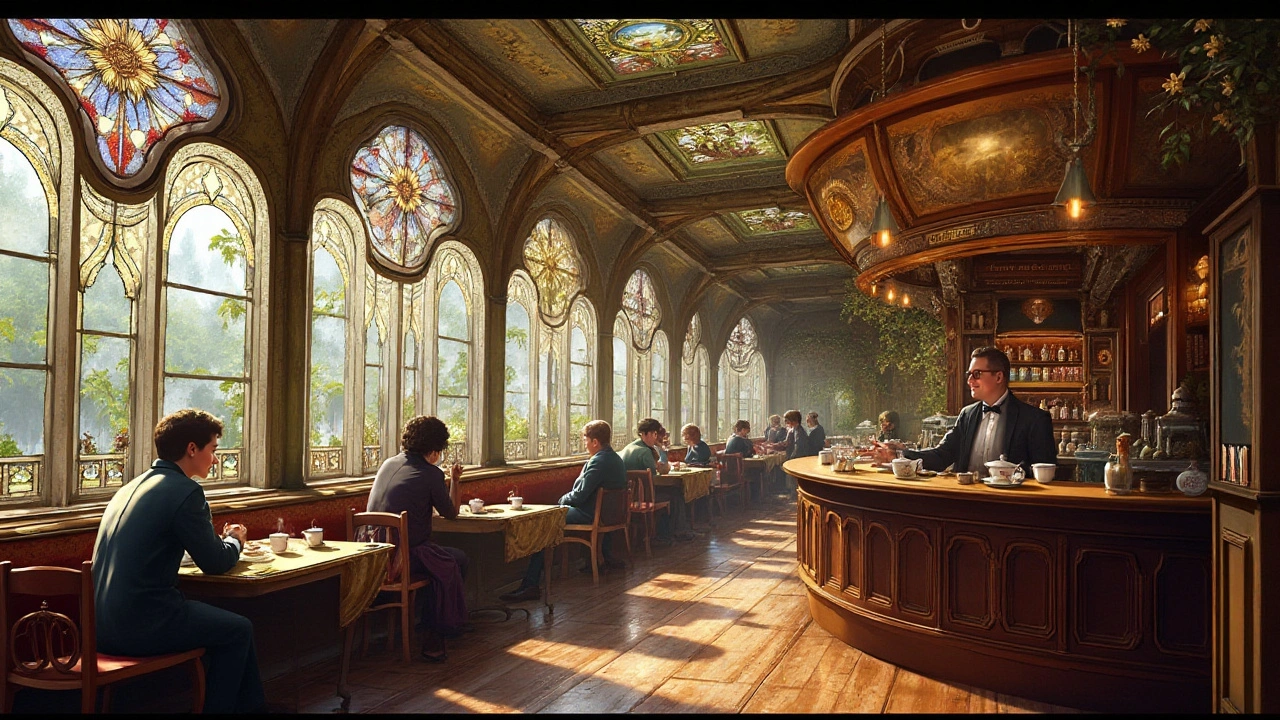
Influential Artists and Their Masterpieces
In the rich tapestry of Art Nouveau, several artists distinguished themselves, paving the way for a new aesthetic language that celebrated the fusion of art and nature. Among them, the name Alphonse Mucha often springs to mind. Mucha was a Czech painter and decorative artist whose works epitomize the ornate and flowing characteristics of the Art Nouveau movement. His iconic posters, particularly those featuring actress Sarah Bernhardt, became synonymous with the style itself, blending intricate botanical patterns with elegant human figures. His aetherial depictions not only helped to popularize the movement but also endeared it to a wider audience.
Another towering figure is Gustav Klimt, whose opulent and sensual works placed him right at the heart of the movement. Klimt's famous 'The Kiss' remains a masterpiece that pulsates with the era's essence, wrapped in gold leaf and decorated with entwined patterns. Klimt was also a key member of the Vienna Secession, a group that sought to challenge the conventional understandings of art at the time, and whose influence spread across multiple realms of design and decorative arts.
Moving north, we encounter René Lalique, known for his breathtaking jewelry pieces and glass art. Lalique mastered the balance between traditional craftsmanship and the new expressive lines of Art Nouveau. His creations often featured natural motifs, from peacocks to orchids, each rendering deeply dynamic and utterly spellbinding.
Louis Comfort Tiffany and the Stained Glass Revolution
In the United States, Art Nouveau found a champion in Louis Comfort Tiffany. Born into luxury, Tiffany utilized his resources to innovate in the realm of stained glass, developing techniques that were revolutionary at the time. His company produced stunning lamps, windows, and decorative objects that became hallmarks of Art Nouveau design. Tiffany's work is celebrated for its vibrant colors and elaborate designs, each piece a magnificent exploration of light and transparency. The widespread appeal of Tiffany’s artifacts helped to cement Art Nouveau as a global phenomenon.
"My idea is the complexity of human emotion, rendered into the simplicity of glass." - Louis Comfort Tiffany
Tiffany's mastery went beyond mere appeal, his stained-glass windows embody the movement's ideals, transforming everyday objects into works of art. They were not mere fixtures but dialogues between luminosity and form, making spaces seem alive and dynamic, a clear signature of Art Nouveau.
Global Influence and Lasting Legacy
The reach of Art Nouveau was truly global, touching places far beyond its origin area. In Spain, Antoni Gaudí revolutionized architecture with his vivid and bizarre creations that have become symbols of Barcelona. Structures like the Sagrada Familia and Park Güell are masterclasses in the possibilities of harmony between function and organic forms. Gaudí's genius lay in his ability to dream in colors and textures, reformulating the mundane into magical spaces.
On another continent, Émile Gallé took the movement to new heights in the realm of furniture making and glass art. His works were infused with poetic realism and a penchant for meticulous detail. Often showcasing floral themes and calligraphic motifs, Gallé’s creations were not merely functional but transcendental, transforming interior spaces by imparting a sense of nature’s tranquility and movement.
The impact these creators had would not only shape the trajectory of design but also inspire future generations, ensuring the sustained relevance of Art Nouveau. Even today, the movement remains a vital source of inspiration, evidence of its timeless appeal and the human longing for beauty intertwined with daily life.
The Impact on Architecture and Interior Design
The art movement known as Art Nouveau brought a radical departure from the architectural traditions that dominated the 19th century. Its impact on buildings and interiors was both profound and widespread, offering a fresh aesthetic to those weary of conventional designs. Architects and designers were eager to embrace this new style, which emphasized flowing, organic forms and eschewed the geometric rigidity of the previous eras. The movement drew heavily on nature, with motifs inspired by flowers, vines, and waves weaving through facades and interior spaces.
One of the most notable aspects of Art Nouveau architecture was its integrated approach. Buildings were designed as cohesive artistic works, where every element from the exterior to the furnishings within harmonized with the overarching theme. Noteworthy architects such as Antoni Gaudí in Spain took this philosophy to new heights, creating structures like the Casa Batlló in Barcelona. Gaudí’s visionary designs defied conventional design with undulating lines and vibrant mosaics that created living facades teeming with color and movement.
In the realm of interior design, Art Nouveau introduced several innovations. Rooms were crafted with an eye for elegance, filled with custom furniture and décor that echoed the same sinuous lines found in the architecture. Every piece was bespoke, designed to fit the unique curves and forms of individual spaces. From undulating staircases to stained glass windows depicting elaborate nature scenes, these interiors provided a sensory journey unlike any other. This methodology was a departure from the mass-produced items that had begun to dominate the market, offering instead a celebration of craftsmanship.
Victor Horta, one of the foremost practitioners of Art Nouveau architecture, once said, "Beauty, practicality, and harmony are the essential components of one's environment." Horta’s work in Belgium, most famously the Hotel Tassel in Brussels, showcases his belief in the integral beauty of intertwined architectural elements.
During its peak, Art Nouveau influenced public buildings and private domiciles across Europe and spread to North America and beyond. Cities like Paris, Brussels, Vienna, and Glasgow became hotbeds of Art Nouveau activity. In Paris, Hector Guimard's designs for the city's Metro entrances remain iconic, characterized by their whimsical ironwork and organic forms. These public structures captivated city dwellers and visitors, proving that art could be both functional and deeply inspiring.
A unique feature of Art Nouveau architecture was its innovative use of materials. Designers often worked with glass, wrought iron, and ceramics to achieve the intricate details necessary to bring their visions to life. These materials allowed for bold experimentation, as seen in the work of the Viennese architect Otto Wagner, whose Post Office Savings Bank combined practicality with ornate beauty. His use of aluminum for ornamental purposes was revolutionary, highlighting how Art Nouveau pushed the boundaries of traditional construction methods.
The legacy of Art Nouveau in architecture and interior design is still admired today. Its influence can be seen in contemporary movements that emphasize ecological harmony and creative detailing. Though the movement had largely faded by the onset of World War I, being overtaken by the stark minimalism of Modernism, many elements of Art Nouveau resonate with today's designers looking to blur the lines between art and functionality once more.
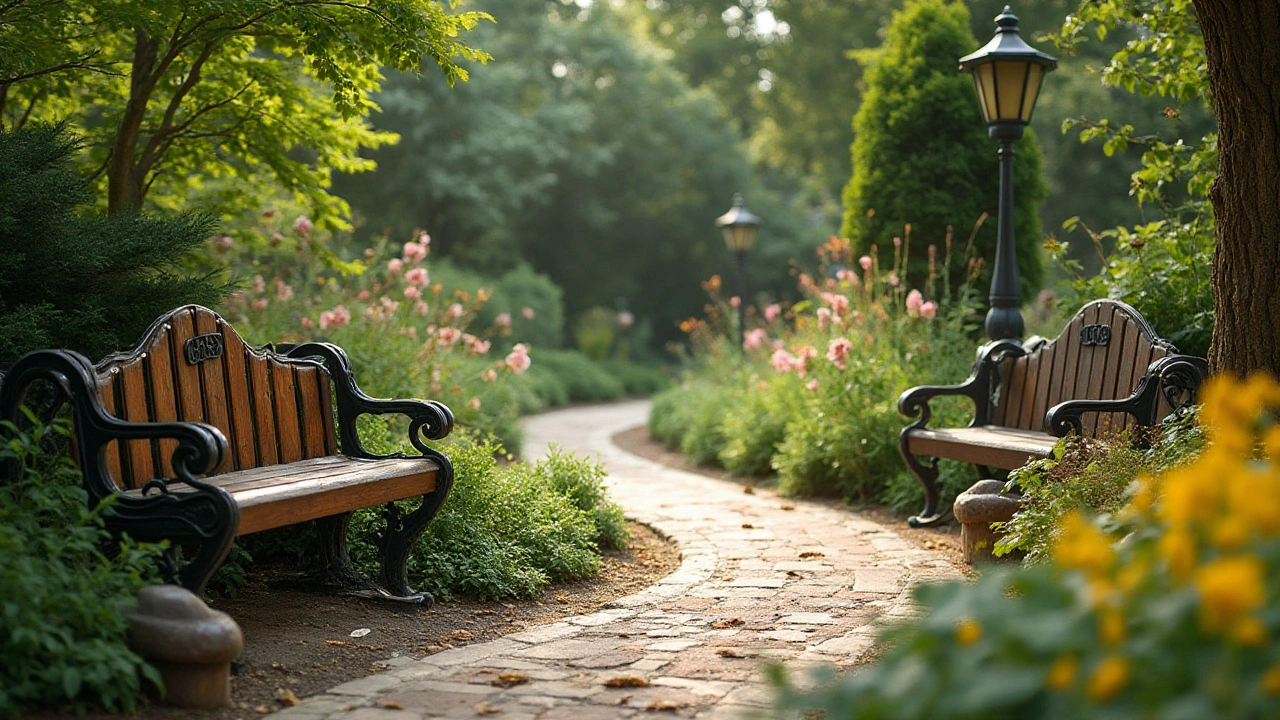
Art Nouveau's Enduring Legacy
Art Nouveau, while a product of its time, has managed to weave itself into the very fabric of contemporary art and design. This remarkable movement, with its bold yet delicate embrace of nature, remains a source of inspiration more than a century after its heyday. One might say that Art Nouveau continues to influence modern designers who look to its sinuous lines and intricate motifs as timeless guides in creativity. It is not just a relic of the past but a living testament to the idea that art can be integrated harmoniously with the natural elements.
The geographical spread of Art Nouveau contributes significantly to its enduring legacy. This style wasn't confined to one location; it took root from Parisian streets with Hector Guimard's metro stations to the ornate tiles of Gaudí's Barcelona. The innovation and artistry displayed in these regions continue to invite enthusiasts from every corner of the globe. These geographic nuances add layers of complexity and richness to Art Nouveau's story, marking it as a truly international phenomenon. With each region adding its own flavor, the movement became a tapestry of human ingenuity intertwined with nature.
The movement's influence is also evident in how it paved the way for following styles. For instance, its role in the evolution of Art Deco, which borrowed and built upon Art Nouveau's ornamental and aesthetic aspects, is indisputable. While Art Deco streamlined these elements, it retained the essence of beauty and craftsmanship that Art Nouveau celebrated. This transition showcases the adaptability and the transformative power of Art Nouveau, allowing it to lay the groundwork for artistic expressions that came after it.
The commercial success of Art Nouveau pieces today underscores the movement's lasting appeal. From furniture and jewelry to posters and ceramics, items inspired by this era are coveted for their uniqueness and elegance. High-end auction houses often feature Art Nouveau works, fetching impressive values that reflect the movement's enduring charm. These pieces are not mere historical artifacts but cherished possessions that reflect the era's artistic brilliance and give life to the spaces they adorn.
In today's world, Art Nouveau finds its place not only in physical artworks but also in digital media. Designers in various fields draw from its aesthetics, utilizing its principles in everything from website design to virtual reality landscapes. The movement's adaptability across these new platforms demonstrates its relevancy in an ever-evolving technological landscape. As we delve deeper into the digital age, Art Nouveau's organic forms provide a visual counterbalance to the often sterile and uniform digital environments, showing us that past beauty can inspire future innovation.
Renowned art historian Stephen Escritt once reflected on Art Nouveau's lasting impact, saying, "It taught us how to view art not only as a decorative element but as a symbiotic extension of the natural world." His insights remind us of the continual relevance that this art movement holds, not just as a historical study but as an enduring lesson in beauty and functionality.

